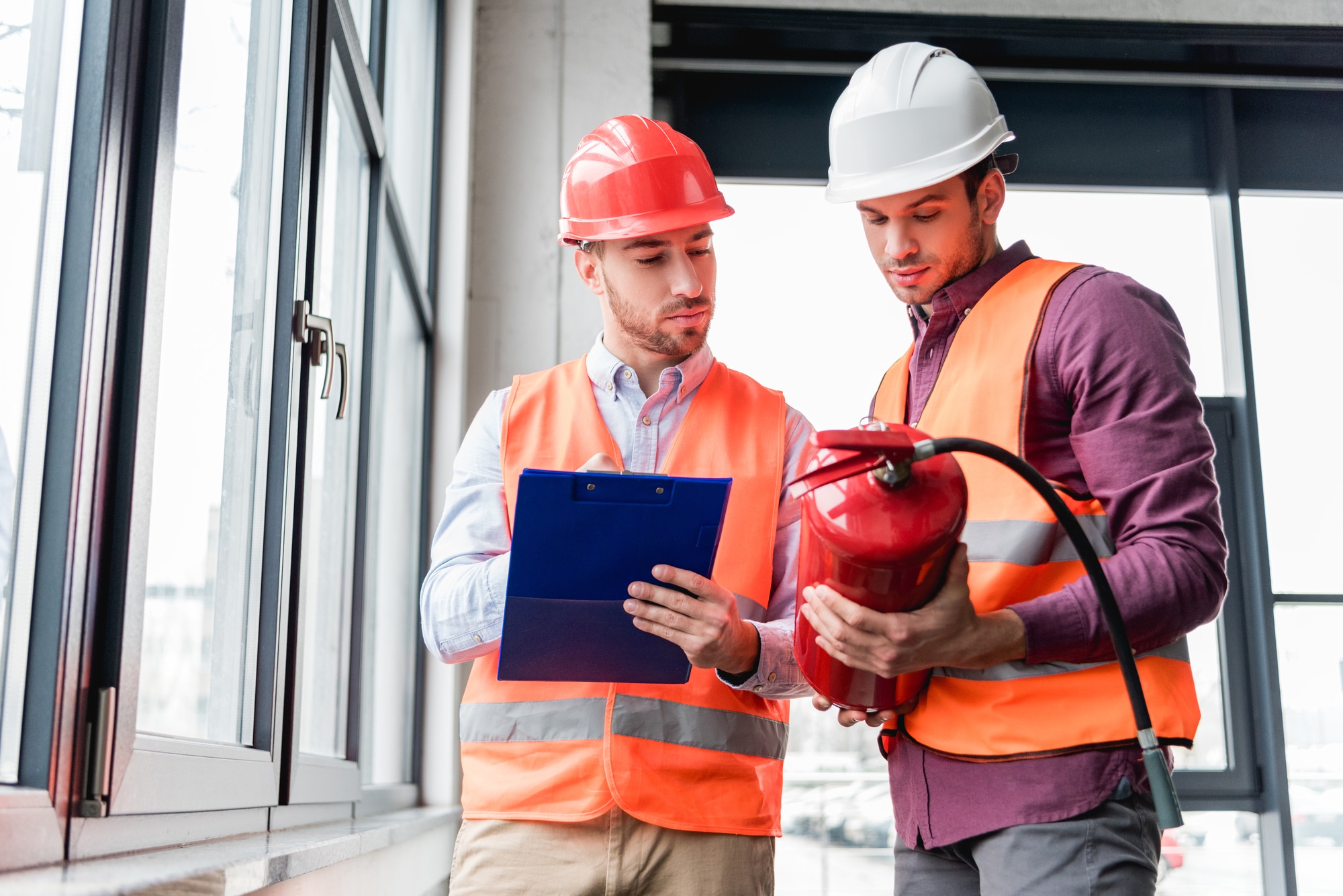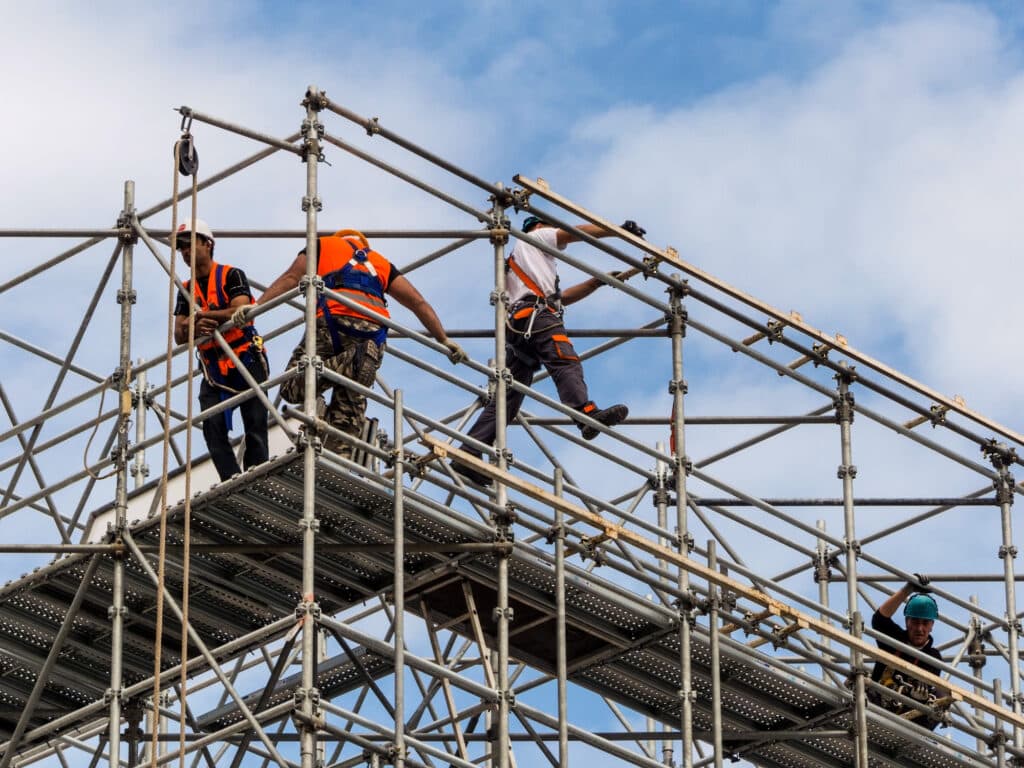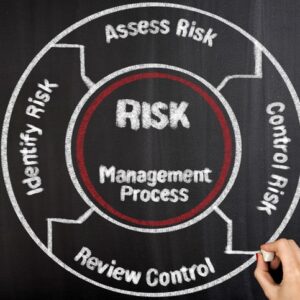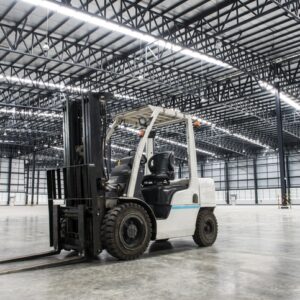Mastering Take 5 Safety: Your Comprehensive Guide to Workplace Risk Assessment

Have you ever wondered how to make your workplace safer? Do you know how to identify potential hazards and prevent accidents from happening? Take 5 Safety is a simple, yet effective, risk assessment tool that can help you keep your workplace safe and secure.
In this article
What is Take 5 Safety?
Take 5 Safety is a simple and effective risk assessment tool used across a range of industries in Australia to reduce workplace injuries and fatalities. By taking just five minutes before starting a task, workers can assess any potential hazards or risks involved and identify controls to minimize or eliminate them. The goal of Take 5 Safety is to create a safer working environment by promoting employee behaviour modification when it comes to risk.
The five-step process involved in Take 5 Safety is as follows:
- Stop and THINK: This step teaches workers to pause and consider the task at hand, as well as the potential hazards involved. It’s essential to develop the habit of thinking before acting and always placing safety as top priority.
- Identify the hazards: The next step is to identify any potential hazards that could cause harm or damage during the task. These could include unsafe work conditions, hazardous equipment, or activities that increase the risk of injury.
- Assess the Risks: Once hazards have been identified, the next step is to assess the level of risk associated with each hazard. This step helps to determine the potential severity of the incident and the likelihood of it occurring.
- Control the Risks: After assessing risks, the worker needs to develop methods to control or eliminate them before proceeding with the task. These could be technical controls (like protective equipment), administrative controls (like safety procedures), or changing work practices.
- Complete the Task: Once the worker has identified and implemented controls to mitigate risks, they can safely proceed with completing the task.
The primary focus of Take 5 Safety is the ability to identify and control potential hazards and risks before starting work operations. By doing so, the risk of workplace incidents is greatly reduced, promoting a safer working environment.
Take 5 Safety also emphasizes the importance of employee behaviour modification in reducing workplace risks. Workers are trained to think before acting and consider their safety and the safety of others at all times. This approach helps to develop a culture of safety, where employees feel empowered to make informed decisions and take proactive measures to prevent incidents from occurring.

Why is Take 5 Safety important in the workplace?
Workplace safety risks are significant and can occur in any job site. Without proper precautions, employees can be severely injured or even killed while performing their duties. This is precisely why Take 5 Safety is an essential tool in keeping employees safe.
The Significance of Take 5 Safety
Take 5 Safety is a simple and effective method to minimize workplace safety risks. It involves taking five minutes to assess potential hazards and risks before commencing any tasks. This process helps workers to identify potential hazards and take the appropriate precautions to prevent injury or accidents.
Benefits of Take 5 Safety
Implementing Take 5 Safety procedures in the workplace can provide numerous benefits, including:
- Preventing accidents: By identifying and addressing potential hazards, workers can minimize the risk of accidents occurring in the workplace.
- Increasing worker awareness: By ensuring that workers regularly consider potential safety risks, they become more aware of how their actions can impact their own safety and the safety of others.
- Creating a safer work environment: With a conscious effort to minimize and prevent hazards, the overall safety of the work environment can be significantly improved.
Take 5 and Behaviour-Based Safety
Take 5 Safety fits well into larger behaviour-based safety systems. Behaviour-Based Safety is a popular approach that focuses on changing employee behaviour to improve safety and minimize risk. Take 5 Safety aligns well with this approach since it encourages employees to be more conscious of their actions in the workplace. By engaging in Take 5 Safety procedures, workers become more proactive in preventing accidents and minimizing risks, contributing to an overall safer work environment.
How does Take 5 Safety help prevent accidents and injuries?
Workplace safety is of paramount importance in any industry. The risks associated with workplace hazards can be devastating, not only in terms of personal injury but also the financial impact on the company. Therefore, it is essential to take appropriate measures to prevent accidents and injuries in the workplace. One such measure is the Take 5 Safety assessment process, which encourages a safety-conscious culture among workers.
Take 5 Safety is a simple and effective way to minimize workplace risks and prevent accidents and injuries. By following the five-step process, workers can quickly identify and assess potential hazards, control risks, and create a safer work environment.
Additionally, it fosters a culture of safety consciousness among workers, contributing to a positive safety culture in the workplace. By regularly conducting quick safety checks, workers are empowered to take responsibility for their safety and that of their colleagues, leading to a safer and more productive workplace.
What are the key steps involved in performing a Take 5 Safety assessment?
1. Stop and Assess the Situation
The first step in the Take 5 Safety assessment is to stop and assess the situation. This means taking a moment to understand the task at hand before starting work. It is important to consider the surroundings, equipment, and materials involved in the work. This step helps raise awareness about the possible hazards and risks and prepares the worker to identify and control them.
2. Identify Hazards
The second step is to identify hazards associated with the task. A hazard is anything that has the potential to cause harm, such as a chemical, piece of machinery, or physical site conditions. Hazards can be categorized as physical, chemical, biological, or ergonomically related. Identifying hazards helps in developing suitable control measures to minimize risks and prevent injuries.
3. Assess Risk
The third step is assessing the risk associated with each hazard. Risk can be calculated as a function of the likelihood of an event occurring and the severity of the consequences if it does occur. Risk assessments help to prioritize hazards and identify the most significant risks that require immediate attention.
4. Control Hazards
The fourth step is to control hazards, which involves implementing control measures to reduce risk. Control measures may include personal protective equipment (PPE), engineering controls, or administrative controls. It is crucial to implement appropriate control measures to minimize risk and prevent accidents and injuries from occurring.
5. Review and Monitor Hazards
The final step is to review and monitor hazards regularly. This involves assessing the effectiveness of the control measures and improving them if necessary. Reviewing and monitoring hazards helps to maintain a safe workplace and prevent accidents and injuries in the future.
The Take 5 Safety assessment involves stopping and assessing the situation, identifying hazards, assessing risk, controlling hazards and reviewing and monitoring hazards. Completing each step before commencing a hazardous work task can help to minimize risks and prevent accidents and injuries. It is vital for workers and supervisors to incorporate Take 5 Safety assessments as an essential part of their daily work routine, as it contributes to a safe and healthy work environment.

How often should Take 5 Safety assessments be conducted?
Generally speaking, Take 5 Safety assessments should be conducted frequently. The frequency will depend on the nature of the work involved and the potential risks posed by the job tasks. In most cases, Take 5 Safety assessments should be conducted at least once a day or before the start of any hazardous task.
The reason for conducting Take 5 Safety assessments regularly is to identify any new risks or changes in the work environment that may create new hazards. If a hazard is identified, prompt action can be taken to implement preventive measures to minimize the risk of an incident occurring.
Take 5 Safety assessments should also be conducted as often as needed in situations that require it. For instance, in high-risk industries such as mining or construction, or when employees perform hazardous or complex tasks, more frequent safety assessments may be necessary. In these cases, the assessments may be conducted several times a day to ensure that control measures are effective and being followed correctly.
Hazard observation is a critical aspect of a Take 5 Safety assessment. By conducting regular assessments, one can observe potential hazards in their work environment and proactively address them before any accidents occur.
What are the benefits of implementing Take 5 Safety procedures?
Prevention of Accidents, Injuries, and Fatalities
One of the most significant benefits of implementing Take 5 Safety procedures is the prevention of accidents, injuries, and fatalities. This is achieved by ensuring that workers follow strict safety procedures and protocols before beginning any task. The Take 5 Safety procedure involves a five-minute safety assessment before commencing any work, actively identifying potential workplace hazards and determining their risk levels. Workers can then take steps to control the identified hazards and mitigate the risk of injury or accidents.
Increased Employee Safety Awareness
Another critical benefit of Take 5 Safety procedures is the increase in employee safety awareness. By conducting regular safety assessments, workers become more familiar with potential hazards and are better equipped to take proactive measures to control them. This can lead to a more safety-conscious workforce and improve their ability to identify and apply standard safety measures in their day-to-day work activities.
Reduced Incident Rates
Take 5 Safety procedures help reduce the incident rates in a workplace. By identifying potential hazards early on and implementing control measures, the likelihood of accidents and injuries decreases significantly. When a workplace prioritizes the safety of their workers, they are less likely to experience incidents, resulting in fewer personal injury claims, reduced liability, and a safer working environment.
Control of Workplace Hazards
By identifying common workplace hazards and controlling them with preventive measures, the potential for harm to individuals is reduced. Take 5 Safety assessments involve a hazard observation that enables the identification of potential hazards in the work environment. Control measures such as protective equipment, safety systems, and standard operating procedures can then be put in place to minimize the risk of harm to workers.
What are some common workplace hazards to consider in Take 5 Safety assessments?
When it comes to workplace safety, it’s essential to consider all potential and existing hazards that workers might encounter in their tasks. By identifying hazards early on and implementing control measures, the potential for accidents, injuries, and fatalities can be reduced. The Take 5 Safety process is an effective way to assess and mitigate potential safety risks.
Here are some common workplace hazards that need to be considered while providing safety assessments for the Take 5 Safety process:
- Electrical Hazards: Workers who come in contact with live electrical components or work in areas with exposed wiring can face significant electrical hazards like electrocution, which can result in serious injury or even death.
- Working at Heights: Workers who work at a height, such as in construction projects, maintenance work, or cleaning, can encounter falls, which can lead to severe injuries or even death.
- Hazardous Substances: Workers who handle hazardous substances such as chemicals, pesticides, biological agents, and radioactive material, need to be protected from skin and respiratory-related diseases caused by the exposure.
- Manual Handling: Workers who perform manual handling tasks such as lifting, pushing, or pulling heavy objects can face back injuries, sprains, and fractures.
- Slips, Trips, and Falls: Workers who encounter slippery surfaces, clutter, damaged floors, or trip hazards like cables, can end up with bruises, cuts, or even broken bones.
- Heavy Machinery: Workers who operate powerful machinery or equipment such as forklifts, excavators, grinders, and chainsaws are suggested to use protective equipment and follow strict guidelines and work instructions.
It is significant to identify potential hazards in the workplace and provide preventive measures before starting work to ensure the safety of the workers and the others in the workplace. Safety assessments should be conducted before starting the work. Identify each hazard’s possible consequences and assess the likelihood of occurrence so that appropriate control measures can be put in place.

How can employees actively participate in Take 5 Safety practices?
Workplace safety is everyone’s responsibility, and employees play a key role in ensuring a safe work environment. Take 5 Safety is a quick and simple process that can help employees identify and manage hazards before starting work. Here are some ways employees can actively participate in Take 5 Safety practices:
1. Use hazard reports and pre-start checklists
One of the most effective ways to actively participate in Take 5 Safety is by completing hazard reports or pre-start checklists. These tools provide a structured approach to identifying and assessing workplace hazards. They can also help employees control hazards and reduce the risk of incidents and injuries.
2. Report any safety issues or concerns
Employees should be encouraged to report any safety issues or concerns they encounter through hazard observation forms or incident reports. This will help management identify and address potential hazards before they become a more significant problem. Reporting safety issues or concerns should be seen as a fundamental part of active participation in Take 5 Safety practices.
3. Foster a culture of safety
Encourage open communication and foster a culture of safety in the workplace. Employees who feel comfortable discussing safety concerns with their colleagues and management are more likely to actively participate in Take 5 Safety practices. This can be achieved by implementing regular safety meetings, providing training on safety practices, and actively promoting a safe and healthy work environment.
Are there any specific industries that can benefit from Take 5 Safety?
Take 5 Safety is a simple and effective process that can benefit many different industries by helping to identify and control risks on job sites, making the workplace safer for employees.
Industries that can benefit from Take 5 Safety include:
1. Construction
Construction sites can be dangerous places, with hazards such as falling objects, electrical risks, and working at heights. Take 5 Safety can help construction workers to identify and control these risks before starting work.
2. Manufacturing
Manufacturing facilities often deal with heavy machinery and dangerous chemicals. Take 5 Safety can help workers ensure they are using the proper protective equipment and taking necessary precautions before beginning a task.
3. Mining
Mining operations often involve working in remote locations and dealing with heavy equipment and explosive materials. Take 5 Safety can help miners identify risks associated with their tasks and ensure that appropriate safety measures are in place.
4. Repair and Service
Workers in the repair and service industry often deal with electrical equipment, combustible materials, and other hazards. Take 5 Safety can help them to identify and control these risks, leading to a safer work environment.
It is important to note that Take 5 Safety is just one aspect of creating a safe workplace. To truly improve safety, workplaces must also implement a behaviour-based safety (BBS) system. BBS relies on employees modifying their behaviour to reduce risks in the workplace. By encouraging safe behaviour and empowering employees to speak up when they identify hazards, a BBS system can help to create a culture of safety that can further reduce incidents and injuries.
What are the limitations or challenges of implementing Take 5 Safety?
While Take 5 Safety is a simple yet effective method for identifying and controlling hazards in the workplace, there are several challenges and limitations to implementing this approach successfully. By understanding these limitations and challenges, workplace safety professionals can take steps to overcome them and ensure their Take 5 Safety programs are effective.
1. Complacency
One of the biggest challenges of implementing Take 5 Safety is complacency. Over time, employees may become complacent with the process, leading to a decrease in effectiveness. This can occur when employees begin to see Take 5 Safety as a routine task that they need to complete rather than a critical step in the hazard identification process. Complacency can be dangerous as it may lead to employees overlooking hazards and failing to follow safety protocols.
2. Lack of Management Commitment
Another challenge of implementing Take 5 Safety is a lack of management commitment or support. Employees may perceive that their managers do not see safety as a priority, leading to a decrease in their compliance with Take 5 Safety procedures. Managers should ensure they demonstrate their commitment to workplace safety and take steps to provide their employees with the time, resources, and training they need to implement Take 5 Safety successfully.
3. Resistance to Change
Resistance to change is another common challenge when implementing Take 5 Safety. Employees may resist new procedures, especially if they perceive their workload to be increased as a result. To overcome resistance to change, it is important to communicate the benefits of Take 5 Safety and provide employees with training and resources to help them understand and implement new procedures.
4. Perception of Time Constraints
Employees may perceive the Take 5 Safety process as time-consuming, leading to resistance to use the process or decreased effectiveness of the process. To overcome this, employers can provide training to explain how the process can improve overall efficiency and reduce the time required to implement health and safety measures.
5. Lack of Training or Understanding
Employees may also lack training or understanding of the Take 5 Safety process, leading to a decrease in effectiveness. To overcome this, employers should ensure their employees receive comprehensive training on Take 5 Safety procedures, including the identification of hazards, the rating of risks, and the development of control measures.
6. Inadequate Communication
Inadequate communication between management and the workforce can also present a significant challenge to implementing Take 5 Safety. Lack of communication can result in a failure to enforce safety policies and procedures, leading to a decrease in effectiveness. To overcome this, it is important to have a clear communication process for all safety-related information.
7. Difficulty Assessing All Possible Hazards
Another limitation of Take 5 Safety is that it may be difficult to assess all possible hazards and to predict their impact on the workplace. Employers must understand that while Take 5 Safety is an effective tool, its limitations exist in the assessment of hazards that may arise from external factors or changes in working conditions. To overcome this, employers should conduct regular risk assessments and provide ongoing training to their employees to help them identify potential hazards.
What is the role of management in promoting and supporting Take 5 Safety?
Take 5 Safety’s success is dependent on buy-in and support from all levels of management. In this article, we will discuss the role of management in promoting and supporting Take 5 Safety.
- Buy-in and Support: Management must understand the importance of Take 5 Safety and the role it plays in promoting a safe work environment. By showing their support for the program, management can ensure that all employees are aware of the program’s significance. They must take responsibility for encouraging and reinforcing the use of Take 5 Safety by leading by example and prioritizing safety as a core value in the workplace.
- Adequate Resources and Training: Management must provide the resources and training necessary for employees to effectively implement Take 5 Safety procedures. Adequate resources may include safety equipment, software, or mobile devices, which enable employees to document safety measures effectively. Providing regular training sessions to refresh employees’ knowledge of Take 5 Safety is essential to the program’s success.
- Regular Safety Audits: Conducting regular safety audits is another way management can support Take 5 Safety. These audits help to identify potential hazards and determine if the procedures put in place are appropriate and effective. It also shows employees that management is committed to safety and willing to address concerns and make changes as needed.
- Safety Equipment: Providing employees with safety equipment such as hard hats, gloves, and safety boots is another way management can support the Take 5 Safety program. This equipment will help employees protect themselves from potential hazards and reinforce management’s commitment to safety.
- Refresher Training: Providing refresher training is also crucial to the success of Take 5 Safety. This training provides opportunities for employees to review and update their knowledge of the program’s procedures. Management should schedule regular refresher courses to ensure that employees do not lose their understanding of how to identify and control workplace hazards.
The role of management in promoting and supporting Take 5 Safety is essential to its success. Buy-in and support from all levels of management, adequate resources and training, regular safety audits, provision of safety equipment and refresher training are specific actions that management can take to support the program. By implementing these measures, management can promote a safer work environment where employees feel cared for and valued.
Stay safe and protect your business with our comprehensive docuements.
Browse our selection of products now and take the first step towards creating a safer and healthier workplace for you and your employees.
-
Crisis Management Plan$599.95 (ex. GST)
-
Environmental Sustainability Policy$59.95 (ex. GST)
-
Business Premium Yearly$500.00 (ex. GST) / year
-
EPS Inspection Checklist$29.95 (ex. GST)
-
Hazard and Risk Management Standard$69.95 (ex. GST)
-
Forklift Truck Safe Operating Procedure$29.95 (ex. GST)






